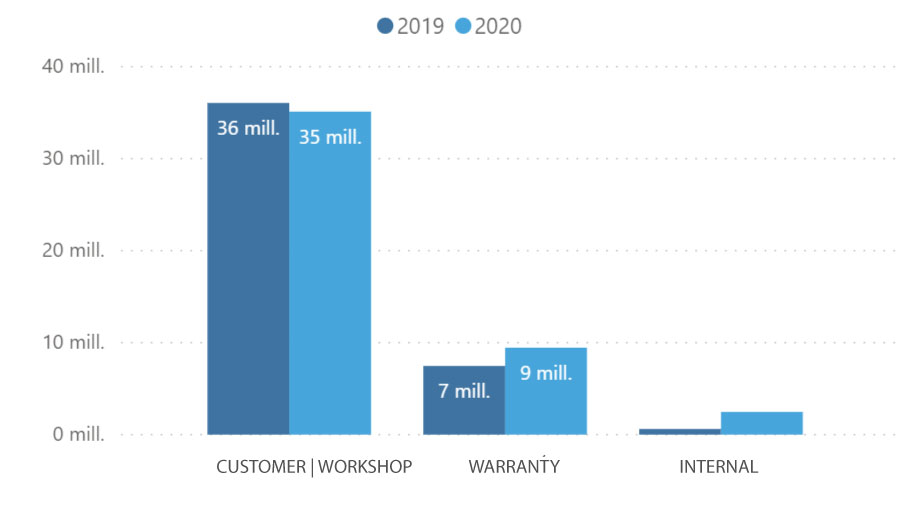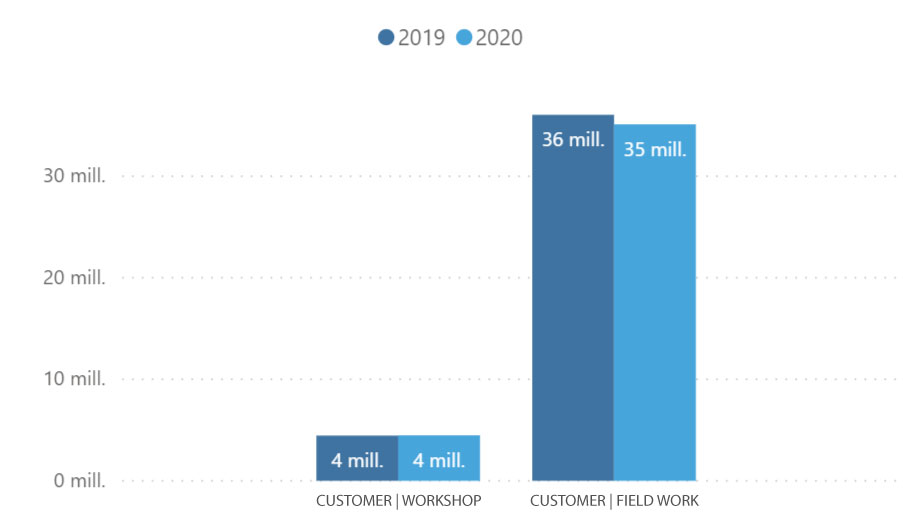This KPI separates total parts sales made to our Service Department by “charge to” (i.e. who pays), in order to see parts that are billed to customers, used for warranty work, and charged internally (e.g. for reconditioning used cars, gifting customers, etc.)

This KPI is useful to understand the composition of parts sales to our workshop; if most are sold for warranty work, it means that the dealership is working mainly on repairing vehicles that are under warranty and is not doing much traditional repair work. Parts sales for warranty work have a lower profit margin than for traditional repairs.
On the other hand, if customers are paying for most of these parts, the dealership is generating sales that have a much higher profit margin.
Do you know Autologica Sky DMS?
Autologica Sky DMS is a software for the automotive and machinery industry with all the functions and integrations that professional dealerships need.
» Request a demo

Equipment dealers can also analyze how the sales charged to customers are composed, separating between field work (i.e. physically going to the location of the equipment to be repaired) vs. repairs customers that come into the workshop. This information is significant when analyzing the costs and benefits of having mechanics that can visit customers.
It is also important to analyze the amount of parts used for internal work or that the dealer pays, for example, for a poorly performed job. You can see this by analyzing in detail parts sales that are “charged to” internal sales.


